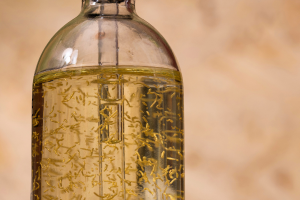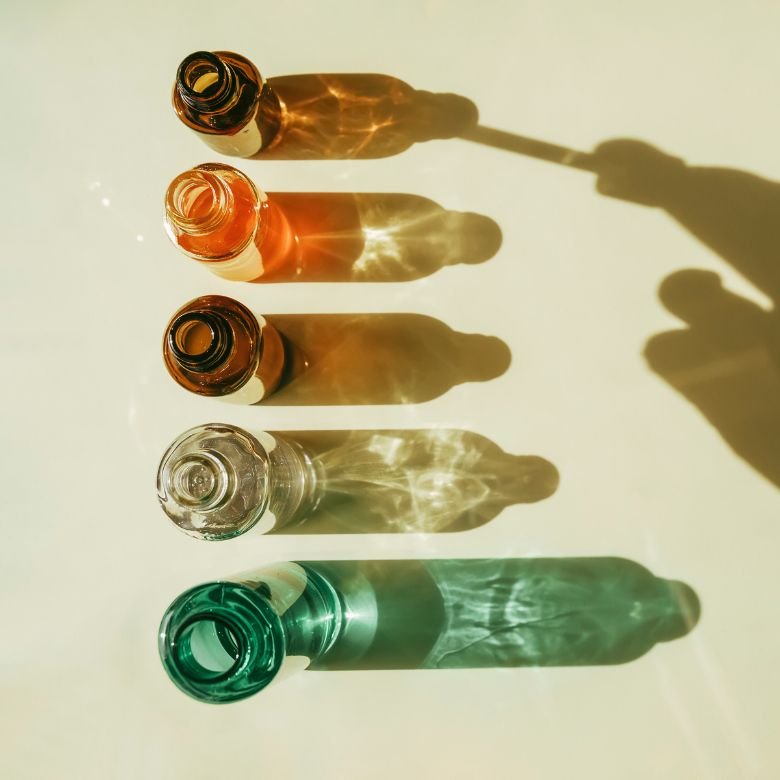Modern cosmetology is constantly developing, and new formulas and cosmetics designed to inhibit natural cell ageing processes are constantly being created. Anti-ageing treatments often use, among others, serums and creams with peptides. What are peptides, how do they work, and what should you know about their properties and applications? Let's check it out!

Peptides in cosmetics — what are they?
In the cosmetics industry, the interest in peptides is not decreasing. What are they? Peptides are organic compounds made of amino acid residues linked by peptide bonds. Based on the amount of amino acid residues, there are:
- oligopeptides (containing less than 10 amino acid residues),
- polypeptides (containing at least 10 amino acid residues),
- proteins (containing more than 100 amino acid residues).
There are natural and synthetic peptides. Natural peptides include, among others:
- protamines, which are basic proteins,
- glutathione, which is an antioxidant,
- peptide hormones (for example: anti-inflammatory adrenocorticotropic hormone or oxytocin, which is a neurotransmitter),
- certain antibiotics (for example: penicillin),
- very strong toxins (e.g. phallotoxins contained in death cap mushrooms).
On the other hand, synthetic peptides are produced in laboratories by, among others, cosmetologists. These compounds are used on the face, hair and body and work very much like the natural ones. Examples of synthetic peptides used in modern cosmetics are palmitoyl hexapeptides, tetrapeptides, tripeptides and matrikines.
What are the peptides used for in cosmetology?
Peptides are currently used in a variety of applications. They are included in many cosmetics that we use on a daily basis, for example in:
- anti-wrinkle and firming creams,
- face masks,
- ampoules containing regenerating serums with peptides and ceramides.
Peptides are also used in specialist cosmetic treatments. They work perfectly, among others, in peptide therapies such as peptide-based mesotherapy, peels and peptide hair therapy.
How do peptides work?
Peptides have many effects on the body. Some peptide compounds stimulate regeneration processes in ageing cells. They increase the amount of natural proteins: collagen and elastin, which improve the condition of the connective tissue. Both natural and synthetic anti-wrinkle peptides smooth the skin and improve its firmness.
Some of the peptides used in cosmetics act as transporters of nutrients responsible for maintaining healthy-looking skin. Such peptides are like conveyor belts carrying building blocks and food into the cells. Nourished, stronger cells remain healthy for longer and are resistant to damage.

Neuropeptides in cosmetology
Among the most intriguing types of peptides are the so-called neuropeptides. They are composed of a few to a dozen or so amino acids. These compounds have a wide range of effects:
- They transmit information between nerve cells.
- They participate in the nutrition, restoration and multiplication processes of the cells in the body.
- They accelerate nutrient uptake.
- They improve skin appearance: they strengthen the cells and even-out the skin tone.
Peptides used on the skin help to make mimic wrinkles more shallow. Thanks to the neuropeptides, the muscles relax and the face looks young and healthy. In cosmetics, peptide therapy is now recognised as an excellent alternative to botulinum toxin injections.
What are the effects of peptide therapies?
It is not without cause that more and more people choose treatments and cosmetics that involve or contain peptides. These compounds have a powerful and holistic effect on the skin. Peptide therapy keeps the skin on your face, abdomen or thighs moisturised and allows it to regain its youthful look. Mesotherapy treatments also improve muscle tension and help to smooth the first wrinkles.
In modern cosmetics, peptides are also used to support the process of weight loss. Compounds such as GHRP-6 or tirzepatide stimulate metabolism and accelerate fat loss. Advantageously, some peptide therapies may also help to normalise blood sugar levels, enhance natural cell immunity, or accelerate saggy skin regeneration processes.
Peptides used in hair care
Peptide compounds have also been widely used in hair treatments. Peptides — when and how to use them? In professional beauty salons, the treatments are chosen and carried out by cosmetologists. After assessing the condition of the scalp and hair, the specialist chooses appropriate therapy in order to:
- inhibit hair loss,
- strengthen hair follicles,
- nourish the hair, make it grow faster and thicker,
- regenerate the scalp,
- improve hair colour,
- support natural regeneration of cells in the case of diseases such as alopecia and dandruff.
Peptide preparations for domestic use are also available on the market. These include, among others, serums which thicken hair and strengthen its structure. Most of these cosmetics are used for one-off treatments or several-week or three-month treatment courses.
What should you avoid when using peptides?
There is no doubt that peptide therapies are among the most effective and state-of-the-art anti-ageing methods. However, it is worth to remember, that these compounds should not be combined with certain substances which include ascorbic acid (vitamin C), alpha hydroxy acids (AHA) and beta hydroxy acids (BHA).
Why should peptides and certain acids not be combined? Acidic preparations destroy the structure of peptides and impair their beneficial effects. Before starting any peptide therapy, you should carefully read the manufacturer’s recommendations for your chosen cosmetics. Long-term peptide therapies must be preceded by a visit to a cosmetologist or specialist doctor.
- https://www.vichy.ca/en_CA/what-are-peptides-and-how-can-they-benefit-your-skin.html
- https://www.mdpi.com/2079-9284/10/4/111
- Zhang L., Falla T. J. (2009). Cosmeceuticals and peptides. Clin. Dermatology 27, 485–494. 10.1016/j.clindermatol.2009.05.013